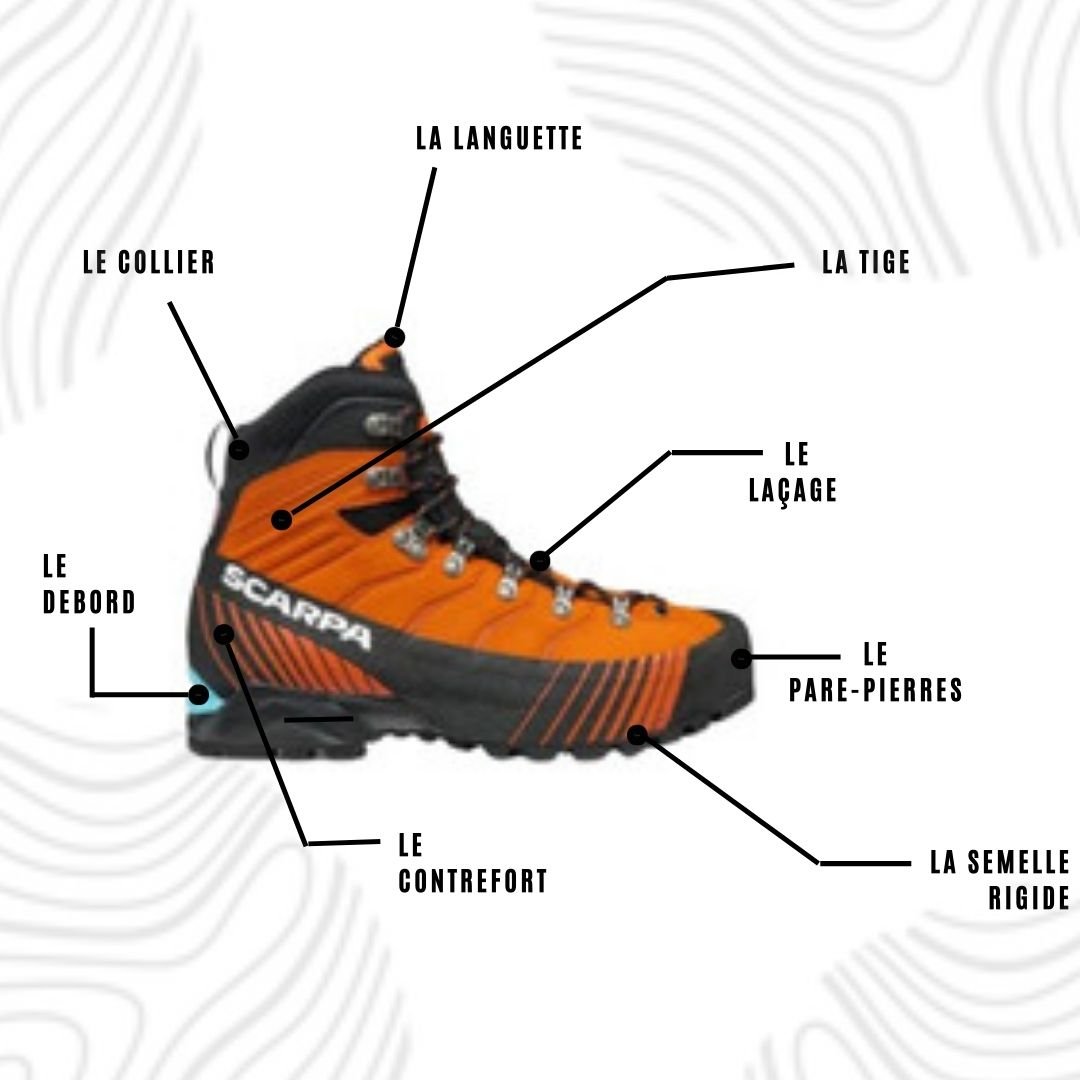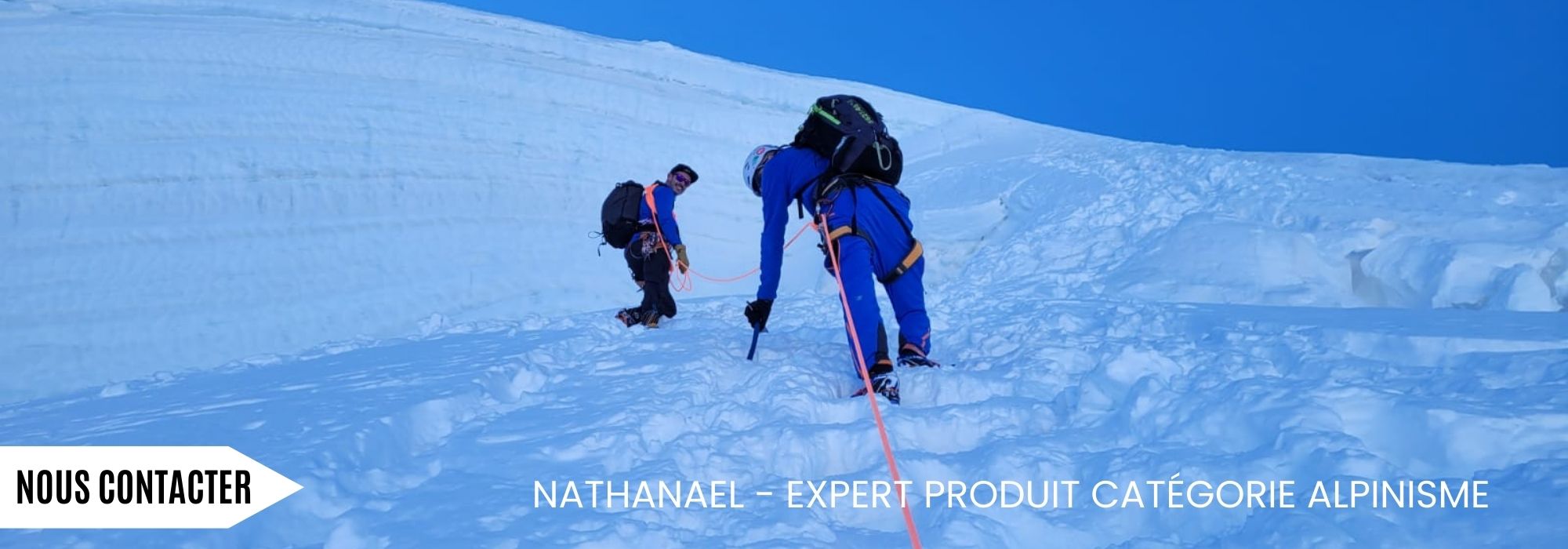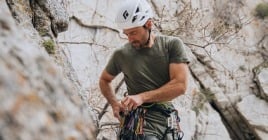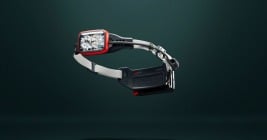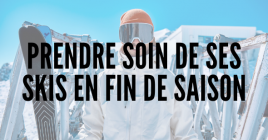Mountaineering is a very demanding sport. Mountains often offer a variety of terrain, so climbers must be able to navigate a wide range of conditions. Mountaineering trips can last from a few hours to several days. To practice this activity, technical equipment is required. To fully enjoy your climb, the choice of your shoes is crucial. A bad purchase could be very painful and even dangerous. There is a large number of products on the market, so it has become more and more complicated to find a pair of mountaineering shoes adapted to your practice. That's why we give you some advice on how to choose them.
How to recognize a mountaineering boot:
ADVICE FROM THE PRODUCT EXPERT:
%20(2).jpg) |
It is essential to choose the right shoe for your activity, but it is also very important to choose the right size. To help you, we have some advice. First of all, you must try the mountaineering shoes with special mountaineering socks. Secondly, your toes should not touch the tip of the shoe. To check this, we suggest a trick. You have to stand on an inclined surface, and if your foot slips and hits the tip, it means that the shoe is too big. Finally, they must be compatible with cleats. To give you an idea, you need to take about 1 size above your usual size for city shoes. |
What are the different types of stiffness?
First of all, we find shoes with a semi-rigid sole. They are recognizable by their small size. They offer absolute comfort and freedom of movement thanks to their slight flexibility. This type of shoe is recommended for progressing on difficult terrain, ridges or snow. However, it is important to avoid routes involving glacier climbing because the sole is not rigid enough for this type of practice.
OUR SELECTION OF SEMI-RIGID AND RIGID MOUNTAINEERING BOOTS:
- Scarpa Phamton 6000 high shaft mountaineering shoes - men - Rigid mountaineering shoes
- Mountaineering shoes La sportiva Nepal Evo GTX - Rigid mountaineering shoes
- La Sportiva Aequilibrium ST GTX Mountaineering Shoes - Women - Semi rigid mountaineering shoes
What are the different types of mountaineering boots?
However, they are not recommended for climbs or prolonged expeditions. Indeed, once wet or damp, it is extremely difficult to dry them quickly.
-
Mountaineering shoes Salewa rapace GTX - women - Single mountaineering shoes
-
Mountaineering shoes Scarpa Mont Blanc Pro GTX - man - Single mountaineering shoes
- La Sportiva Olympus Mons Cube Mountaineering Shoe - Men - Double Mountaineering Shoes
DID YOU KNOW ?
 |
To ensure that your mountaineering boots are perfectly waterproof, we recommend that you add high gaiters or overboots. These will allow you to considerably improve water resistance, but they also provide much better thermal insulation. Designed with completely waterproof, windproof and especially very resistant materials. These accessories are essential for your outings in winter. |
How to choose your mountaineering boots according to your level and experience?
Mountaineering is a sport that requires a lot of training and knowledge. It is important to remember that the mountain is king and a simple mistake can be fatal, so it is important to adapt your equipment to your level, experience and terrain.
For a beginner climber, the choice of shoes is very important for your safety. We recommend a pair of semi-rigid shoes. They will be adapted to initiation outings on mixed terrain. These models will offer you a good foot support and an optimal protection. Moreover, it is possible to add crampons. The weight of the semi-rigid shoes prevents you from tiring too quickly during long trips and it also allows you to keep a great precision in your movements.
TO REMEMBER :
- STIFFNESS IS AN IMPORTANT CRITERION, YOUR SELECTION WILL DEPEND ON YOUR PRACTICES.
- THE CHOICE OF SHOE CONSTRUCTION, SINGLE OR DOUBLE, IS ESSENTIAL FOR YOUR COMFORT.


